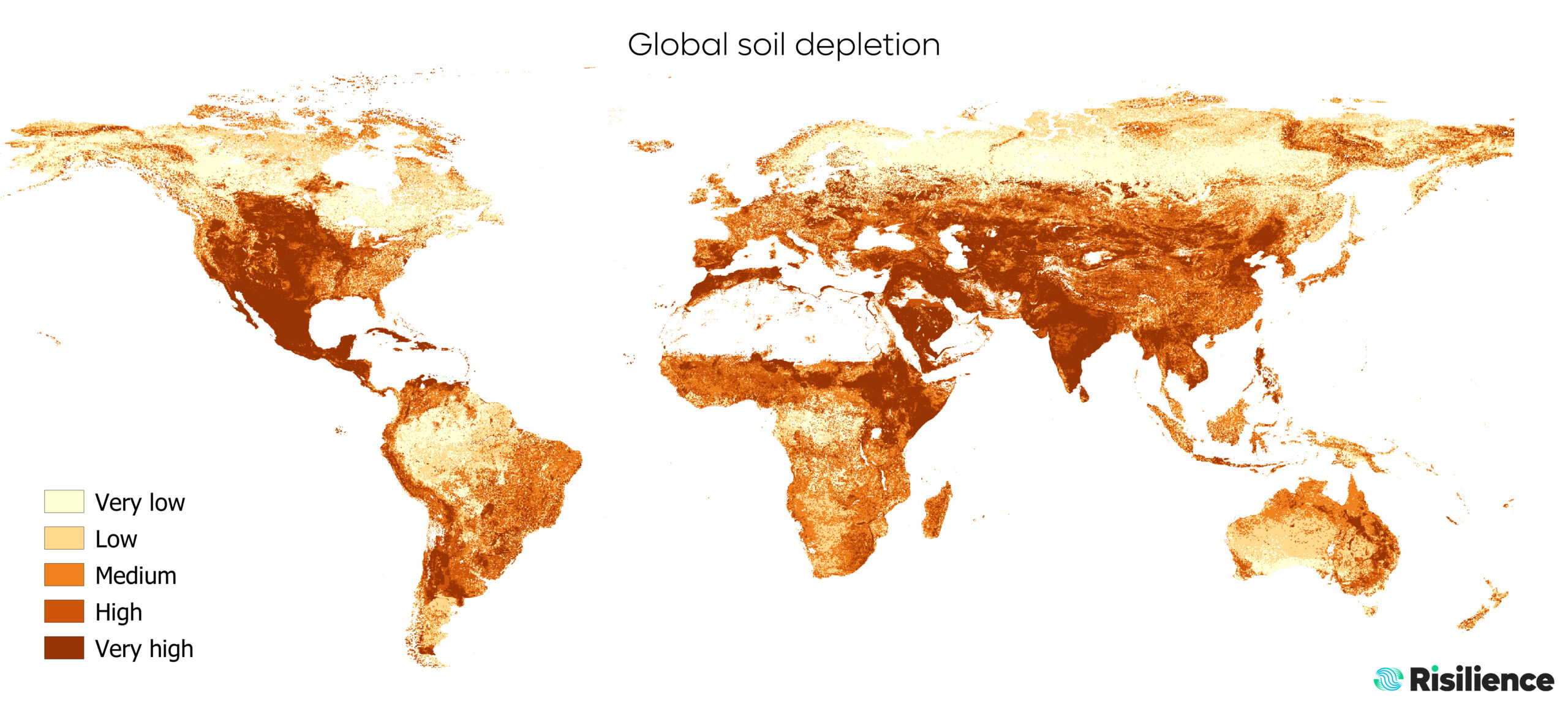The Country Trust Plant Your Pants campaign encourages us to test our garden soil health by planting a pair of cotton pants and digging them up eight weeks later to see what’s left – the more degraded the cotton is, the healthier the soil.
This citizen science initiative does have a meaningful mandate. Soils are extremely biodiverse – one gram of soil has anywhere between 4,000 and 50,000 species of microorganisms in it – and we need nutrient-rich soil to cultivate the plants we rely on in our everyday lives and to store carbon.
According to the Dasgupta Review, up to 80 per cent of terrestrial carbon is stored in our soils. This is important because biodiversity is in crisis – the World Wide Fund for Nature’s Living Planet Report 2022 documents a 69 per cent average loss in the abundance of mammal, bird, reptile, fish and amphibian species since 1970. Consequently, nature and biodiversity are increasingly a focus for climate-risk reporting and regulation.
The Kunming-Montreal Global Biodiversity Framework (GBF) – the international agreement that emerged from COP15, the UN Biodiversity Conference held in Canada in December last year – provides an official biodiversity framework for the next seven years, which sends a clear message to businesses: better look after precious resources to ensure our future is nature positive.
The European Sustainability Reporting Standards (ESRS) will, from 2024, require all large and listed companies to disclose information on their risks and opportunities arising from social and environmental issues, and on the impacts of their activities on people and the environment.
The Financial Stability Board’s (FSB) Task Force on Climate-related Financial Disclosures (TCFD), a global standard for climate disclosure that is fast becoming embedded in regulatory and investor expectations, will soon be joined by the Task Force on Nature-related Financial Disclosures (TNFD). Due to come into force in September 2023, the TNFD adds additional reporting requirements to large businesses, including plastics in the oceanic food chain and loss of soil fertility caused by land-use change.
Good soil management makes sound business sense, particularly for global organisations in the food, fashion and fast-moving consumer goods (FMCG) industries. A substantial part of any large corporate’s net-zero strategy requires decarbonising Scope 3 emissions – those generated by suppliers and raw materials. This is necessary because Scope 3 emissions contribute a huge part of the total emissions for many large companies with complex supply chains. According to the World Economic Forum, FMCG industries together produce more than one-third of global emissions (Ref 1) mainly from their upstream supply chains.
Analysis from a study published in Nature Food, shows that “more than 70% of the food industry’s emission sources come from land use, more specifically by agriculture and deforestation” (Ref 2). It is clear to see why decarbonising FMCG value chains is essential to achieving net-zero targets.
Taking this approach also enables efficiencies. Risilience research shows that companies sourcing their agricultural and forestry raw materials from areas with healthier soils can expect higher yields and lower cost, while promoting healthy soil practices with their suppliers will reduce their Scope 3 emissions and their impact on biodiversity.

A representation, taken from the Climate Risilience platform, of global soil depletion, defined as ‘a change in soil organic carbon stocks, soil erosion, and soil salinity using data from Sanderman et al. 2017, Borrelli et al. 2017 and Ivushkin et al. 2019 *
Practices that prove harmful to biodiversity are costing the earth. The UN Food and Agriculture Organisation (FAO) estimates that, annually, the economic cost of nitrogen fertiliser amounts to US$33 to US$60 billion, and US$77 to US$140 billion for phosphorus. Using too much fertiliser can lead to pollution and eutrophication of freshwater, which in turn means water quality is reduced. Good soil management can improve soil structure, and leads to improved levels of biodiversity, higher yield and cleaner water.
Many businesses are already engaging with climate-risk transition plans to reach net zero but now nature calls. Biodiversity is increasingly under threat. Regulation is looming to ensure companies recognise the business risk that biodiversity loss brings and incorporate this variable as part of their business strategy. Whether you choose to plant your pants or not, encouraging sustainable business practices that ensure the health of our soil to strengthen biodiversity will help secure efficiencies and greater yields – and support nature at the same time.
- Read more about the benefits of taking a science-based approach to TCFD reporting here.
* Ivushkin, K., Bartholomeus, H., Bregt, A. K., Pulatov, A., Kempen, B., & de Sousa, L. (2019). Global mapping of soil salinity change. Remote Sensing of Environment, 231, 111260. https://doi.org/10.1016/j.rse.2019.111260
Borrelli P., Robinson D.A., Fleischer L.R., Lugato E., Ballabio C., Alewell C., Meusburger K., Modugno, S., Schutt, B. Ferro, V. Bagarello, V. Van Oost, K., Montanarella, L., Panagos P. 2017. An assessment of the global impact of 21st century land use change on soil erosion. Nature Communications, 8 (1): art. no. 2013
Sanderman, J., Hengl, T., Fiske, G., 2017 “The soil carbon debt of 12,000 years of human land use”, PNAS 114(36): 9575–9580. doi:10.1073/pnas.1706103114
Ref 1: https://www3.weforum.org/docs/WEF_Net_Zero_Challenge_The_Supply_Chain_Opportunity_2021.pdf
Ref 2: https://www.nature.com/articles/s43016-021-00225-9>>.
Additional information:
https://ourworldindata.org/reducing-fertilizer-use
